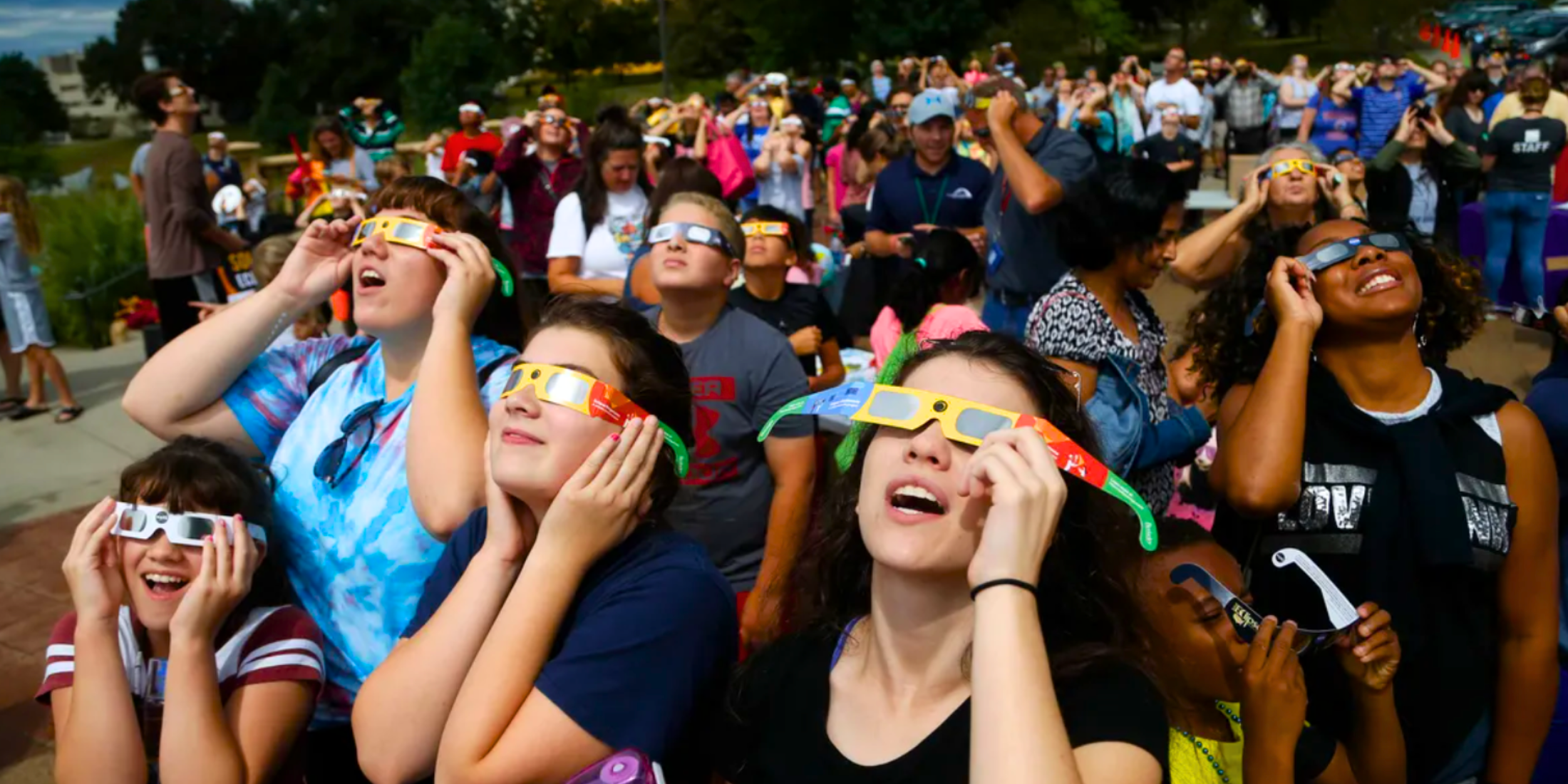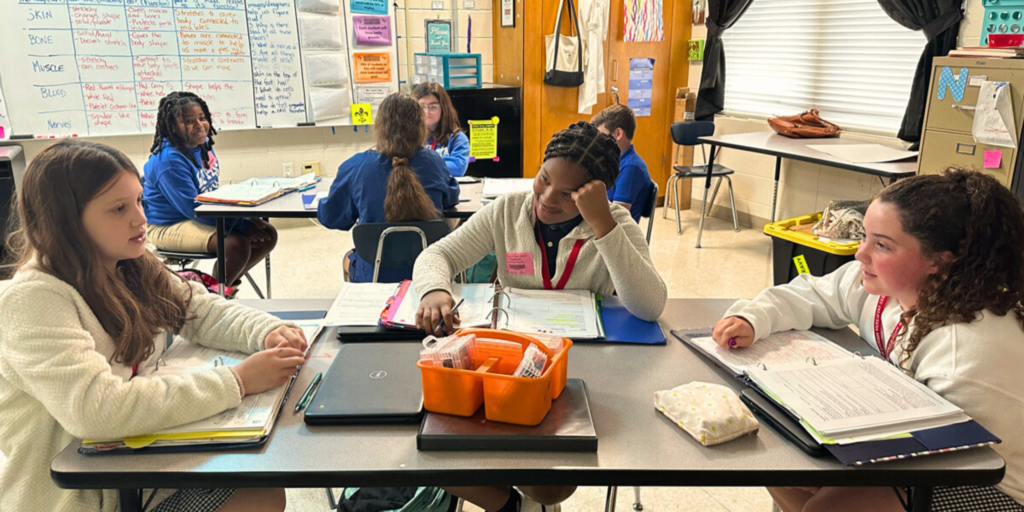DO Look Up: Preparing for the 2024 Solar Eclipse with OpenSciEd and Free Teaching Resources

Solar Eclipse Free Teaching Resources 2024
As April 8, 2024 approaches, excitement builds for one of the most awe-inspiring celestial events: a total solar eclipse. This rare phenomenon occurs when the Moon perfectly aligns between the Earth and the Sun, casting its shadow on the Earth’s surface. Humans have been captivated by this rare phenomenon for centuries. The 2024 solar eclipse promises to be a once-in-a-generation spectacle.
The eclipse will begin at 10:27 a.m. CDT in Mexico and conclude at 3:35 p.m. EDT in Canada and sweep across central Mexico, parts of Texas, Oklahoma, Arkansas, Missouri, Kentucky, Illinois, Indiana, Ohio, Pennsylvania, New York, Vermont, New Hampshire, Maine, and southern Canada. The total eclipse will last for 3 minutes and 30 seconds for those within the path, while those outside the path will experience a partial eclipse.
This is an excellent opportunity for educators to engage students in phenomena-based science learning. By centering instruction around real-world, observable events like eclipses, teachers can spark students’ natural curiosity, encourage them to ask questions, and guide them through the process of scientific investigation (investigation-centered science). This approach aligns with the Next Generation Science Standards (NGSS), which emphasize the importance of students actively engaging in scientific practices to develop a deep understanding of core ideas and 3-dimensional concepts.
A wealth of resources are available to support educators in teaching about the upcoming solar eclipse. From lesson plans and activities to webinars, live streams, and educational materials, these resources provide engaging and informative ways to incorporate the eclipse into science education.
This blog post will explore how the OpenSciEd curriculum can help students understand the solar eclipse phenomenon and highlight additional resources to engage students in investigation-centered science during the eclipse.
Fostering Excitement and Wonder: OpenSciEd's Approach to Teaching About the Sun, Earth, and Space

OpenSciEd's Unit 8.4: Earth in Space is an excellent NGSS-aligned resource for teachers looking to engage middle school students in learning about the Sun, Earth, and space through observing phenomena and conducting investigations. The unit begins with students observing a biannual pattern of the Sun setting aligned between New York City buildings, sparking their curiosity and leading them to explore additional patterns in the sky. The unit also incorporates indigenous astronomies from around the world, highlighting how patterns in the sky influence the rhythms of life on Earth.
Throughout the unit, students develop models to explain the patterns they have identified, such as seasons, eclipses, and lunar phases, by studying the Earth-Sun and Earth-Sun-Moon systems. Students learn to connect the patterns they observe in the sky and their lives. By relating these patterns to their daily experiences, they can develop a personal connection to the science they are learning. This approach makes science more relevant and engaging and helps students see the value of scientific thinking in understanding the world around them.
By leveraging the excitement surrounding the eclipse and using high-quality instructional materials like OpenSciEd's Earth in Space unit, teachers can create memorable, impactful learning experiences that foster a lifelong love of science. Explore and download the unit HERE.

Additional Solar Eclipse Free Teaching Resources
To support educators and caregivers in preparing for the 2024 solar eclipse, many organizations provide free information and tools to help engage students in the science behind solar eclipses and make the eclipse a memorable learning experience. Here are some notable resources:
- NASA Solar Eclipse Educational Materials: My NASA Data, in collaboration with the NASA Heliophysics Education Activation Team (NASA HEAT), has released a new set of resources for educators centered around solar eclipses. These resources include lesson plans, mini-lessons, student-facing web-based interactives, and a longer "story map" that deepens the investigation of the phenomenon over multiple class periods. Engage learners with data collected during past solar eclipses, including maps and visualizations, and explore how data is used to predict future solar eclipses. [learn more]
- National Science Teacher Association (NSTA): The NSTA offers a variety of resources for educators, administrators, and families, including guides, articles, books for students, and a recent webinar titled "Get Ready for the April 8 Solar Eclipse." These resources provide valuable information and NGSS-aligned strategies for engaging students in learning about the eclipse and related scientific concepts. [learn more]
- National Science Foundation (NSF): The NSF, in collaboration with agency partners, will serve as a major source of information, educational activities, and experiences related to the 2024 solar eclipse. They will host in-person events, a livestream of the eclipse, and distribute solar eclipse glasses to the public. Leading up to the eclipse, NSF will host multiple outreach events at public libraries, museums, and observatories across the country, many of which are free and open to the public. [learn more]
- Smithsonian National Air and Space Museum: Exploring Solar Eclipses: The Smithsonian offers a range of educational resources and activities, including solar eclipse model activities, information about different types of eclipses, biographical information about a female astronomer, children's book recommendations, and a shadow puppet craft activity. These engaging resources are designed to help students understand the science behind eclipses and inspire them to explore the wonders of our universe. [learn more]
Countdown to the 2024 Solar Eclipse!
Teaching about the sun and space is not just about understanding astronomical events; it's about fostering curiosity, critical thinking, and a sense of wonder about the universe. By leveraging the excitement surrounding the eclipse and using high-quality, phenomena-based instructional materials, teachers and caregivers can create memorable experiences that inspire students to explore the wonders of our universe and develop a deep understanding of scientific concepts.
So, as we count down to April 8, 2024, let us embrace this once-in-a-generation opportunity to inspire and educate our students and create a generation of scientists, innovators, and explorers who will shape the future of our world.
* * * * * * *




